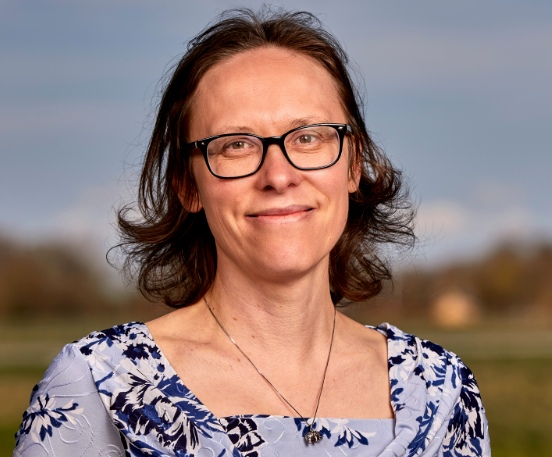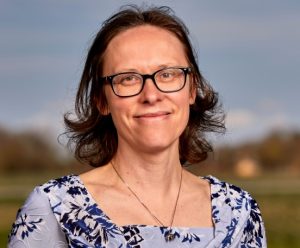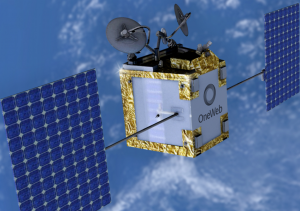
Recruitment within the satcom industry is a pain point for many operators, even for the biggest household names. Not enough young people are choosing to study STEM subjects and this skills shortage is already being felt across the satcom industry. This is a real challenge, which is exacerbated because the satellite industry is inherently complex and not widely understood. Unless we work together as an industry to address the skills gap, it’s only going to worsen as time goes on.
So, what can we do to tackle this issue and engage young people early on so that they understand what opportunities exist in the satcom industry and find it interesting enough to want to choose it as a career?
Future Classroom concept
One initiative that’s proving highly effective is being carried out at Shaftesbury School in Dorset in the UK. The school, which serves pupils between the ages of eleven and eighteen, operates a great initiative called ‘Future Classroom’. Pupils get to find out about and discuss a whole range of STEM based topics in a desk free learning environment. The programme involves group and project-based work, work experience placements, and makes use of next gen technologies like AR and VR.
The initiative, which is headed by Alex More, Lead Teacher of Innovation in Teaching and Learning and Assistant Head Teacher, has helped to enthuse pupils about STEM and give them hands on experience.
STEM and satcom in schools
Martin Coleman, Satcom Innovations Group Board Advisor, works closely with the Shaftsbury school as part of the Future Classroom initiative. Martin has always been passionate about inspiring the next generation to develop an interest in the satcom industry and STEM in general, so when approached by the school, was hugely enthusiastic about being involved.
Within the Future Classroom, Martin provides the pupils with an insight into the different kinds of roles available in the satcom industry. He arranges trips to satellite operators and manufacturer sites, as well as coordinating work experience opportunities.
I recently spoke to Alex More and Martin Coleman as well as a young person who has benefited from the process and been mentored by Martin.
Q. Alex, the Future Classroom sounds like a brilliant initiative. Can you tell us a bit more about how it works?
Alex More: We believe here at Shaftsbury School that science, technology, engineering, art and maths should all be connected together. We call it STEAM – which is STEM but with art included. One of the amazing things about the work that we’ve done here at the school, is that we’ve been able to collapse the traditional subject disciplines, and merge science and technology to solve complex problems. We’ve been working in this way with STEAM for about five years.
We designed a new space in 2019 called The Future Classroom, which is pretty much what it says – it’s a futuristic learning space with no desks. It’s a place where technology and the teacher can coexist rather than technology replacing the teacher.
And for us, it’s about making students owners of brilliant knowledge rather than just consumers of it. So, with that kind of ethos in mind, we got rid of the traditional desk setup that you see in classrooms. We have a fantastically collaborative space where students come together around ideas.
Q. What has surprised you the most about the initiative?
Alex More: Within the Future Classroom, the students plot their ideas on whiteboards, and then they pitch them back to CEOs and other business leads. I think the thing that blows me away the most is the fact that the students are able to articulate at almost an industry standard level when speaking in front of a camera or sometimes via zoom, when chatting to CEOs. They’re able to use their skills to present it in such a way that says: this is your product, this is the problem, and this is our solution.
Q. How did the school’s relationship with SIG advisor, Martin Coleman get started?
Alex More: We were looking at space as an interesting area to explore, particularly the messy problems of space debris, Mars colonisation, and some of the other difficult issues that the space industry is facing. I reached out to Martin, and he was super impressed with our Future Classroom concept. He came in and has been working with the students since.
Q. Martin, how do you think we should tackle the issue of talent acquisition?
Martin Coleman: The skills gap is a real problem for a lot of industries and it’s not going away. I believe that businesses can’t simply rely on the government, or universities or the schools themselves, to solve this problem. It’s up to the businesses to step up and be part of the solution. I’ve long campaigned that businesses should be going into schools to educate young people about what their industry involves and what career paths are open for young people. The way that Shaftsbury school is operating is truly unique and it is making this happen.
I think businesses need to work much more closely with schools, and it doesn’t have to be a huge time commitment. Even just a few hours might be enough to make a difference and ignite a young person’s passion in STEM and space. Just imagine what we could achieve, if every company in the UK committed to doing this.
Young people
We also had the opportunity to speak to a student at the school, Henry Slatter, who has been engaged with the STEAM programme since it began, around five years ago. Henry is now in the final year of his A-Levels and is hoping to go on to study mechanical engineering after finishing school.
Q. Henry, where did your love of space come from and how old were you when you started to think about aerospace and space as a career path?
Henry Slatter: I loved Star Wars when I was little, but going into secondary school, I kind of forgot about all of that. But when doing GCSE physics in years 10 and 11, I remember learning about space in the Future Classroom, and thinking, this is something that I’m so interested in, it could actually be a career as well. Yeah, I think that’s when my interest was really sparked.
Q. You’re planning to study mechanical engineering which is great. Martin Coleman has been mentoring you for the last few years and helping you to learn about and engage with the satcom and space industry. Has that been a helpful experience?
Henry Slatter: I did work experience through the Future Classroom, and it was really cool to see all of the different industries that there are in aerospace. There are lots of different aspects of space to focus in on. It’s not all about building a satellite. Having Martin as a mentor has really broadened my horizon of what I can do in a space industry.
A blueprint for closing the skills gap?
The results of the Shaftsbury School’s Future Classroom programme speak for themselves. Since the initiative began, several students have gone on to follow paths leading to STEM careers. At least five students have chosen to study astrophysics, mechanical engineering, aerospace design, or are completing an apprenticeship scheme with some of the biggest names in satcom.
And of course, we can’t even begin to quantify the impact that this kind of scheme may have at a later date. Just maybe, a seed has been planted that may lead young people into STEM industries later on, even if they don’t choose a direct route straight after school.
If the satcom industry is serious about closing the skills gap, it’s time for businesses to invest in young people and work closely with schools. By engaging with schools in this way, businesses can help to inspire and educate school age students about the huge array of opportunities that exist in the satcom industry enthusing and motivating the next generation of satcom engineers.
Image (top): OneWeb (bottom): Satcoms Innovation Group

See also: Viewpoint: Patent dispute – Amazon, Nokia clash over video streaming







